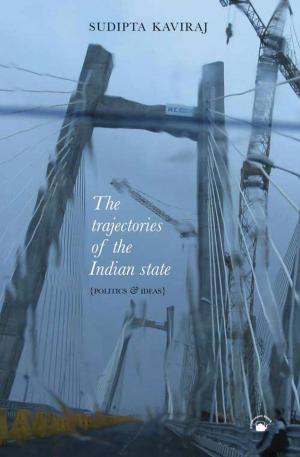India's Environmental History—A Reader
Vol. 1: From Ancient Times to the Colonial Period; Vol. 2: Colonialism, Modernity, and the Nation
Nonfiction, Science & Nature, Science, Biological Sciences, Environmental Science| Author: | Mahesh Rangarajan, K. Sivaramakrishnan | ISBN: | 9788178244396 |
| Publisher: | Permanent Black | Publication: | December 15, 2009 |
| Imprint: | Language: | English |
| Author: | Mahesh Rangarajan, K. Sivaramakrishnan |
| ISBN: | 9788178244396 |
| Publisher: | Permanent Black |
| Publication: | December 15, 2009 |
| Imprint: | |
| Language: | English |
Environmental history in India has generated a rich literature on forests, wildlife, humananimal conflict, tribal rights and commercial degradation, displacement and development, pastoralism and desertification, famine and disease, sedentarism and mobility, wildness and civility, and the ecology versus equity debate.This reader brings together some of the best and most interesting writing on India’s ecological pasts. It looks at a variety of the country’s regions, landscapes, and arenas as settings for strife or harmony, as topography and ecological fabric, in the process covering a vast historical terrain.Vol. 1 provides an antidote to the existing historiography, which barely takes notice of the era before 1800. The essays here range from prehistoric India to the middle of the nineteenth century. They provide insights on forest and water disputes, contests over urban and rural space, struggles over water and land, and frictions over natural wealth which have led to a reinterpretation of source materials on early and medieval India.Vol. 2 shows how colonial rule resulted in ecological change on a new scale altogether. Forests covering over half a million sq km were taken over by 1904 and managed by foresters. Canal construction on a gigantic scale gave British India perhaps more acreage than any other political entity on earth. Similar new forces were at work in relation to the animal world, with species being reclassified as vermin to be hunted down or as game to be selectively shot.For all who are interested in the diverse and detailed findings of the best scholarship on India’s environment, this book (and its companion volume) is essential.
Environmental history in India has generated a rich literature on forests, wildlife, humananimal conflict, tribal rights and commercial degradation, displacement and development, pastoralism and desertification, famine and disease, sedentarism and mobility, wildness and civility, and the ecology versus equity debate.This reader brings together some of the best and most interesting writing on India’s ecological pasts. It looks at a variety of the country’s regions, landscapes, and arenas as settings for strife or harmony, as topography and ecological fabric, in the process covering a vast historical terrain.Vol. 1 provides an antidote to the existing historiography, which barely takes notice of the era before 1800. The essays here range from prehistoric India to the middle of the nineteenth century. They provide insights on forest and water disputes, contests over urban and rural space, struggles over water and land, and frictions over natural wealth which have led to a reinterpretation of source materials on early and medieval India.Vol. 2 shows how colonial rule resulted in ecological change on a new scale altogether. Forests covering over half a million sq km were taken over by 1904 and managed by foresters. Canal construction on a gigantic scale gave British India perhaps more acreage than any other political entity on earth. Similar new forces were at work in relation to the animal world, with species being reclassified as vermin to be hunted down or as game to be selectively shot.For all who are interested in the diverse and detailed findings of the best scholarship on India’s environment, this book (and its companion volume) is essential.















